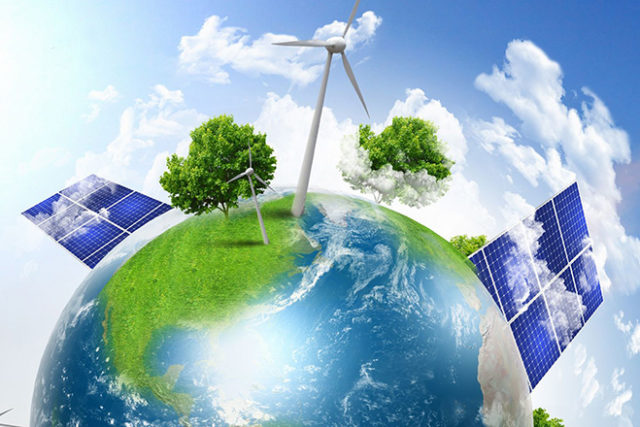Green energy is supposed to be a cleaner source of energy for people to use. By clean, it is meant that the energy produces less harmful pollutants, and in some cases, this is true. However, there are costs and benefits to everything, including green energy. A cost of green energy is that it does not reduce pollutants in the air and that some forms of green energy, such as wind turbines, can possibly harm animals. Additionally, another downfall of green energy is that while manufacturing green energy products, such as electric cars or solar panels, environmentally unfriendly pollutants can be released into the air, which can be ultimately be harmful for the environment. Overall, although green energy can be beneficial in some perspectives, there are also plenty of costs associated with it.
One of the costs of green energy is that it may not even reduce detrimental pollutants in the air. For example, one form of renewable energy is wind turbines, which are used to generate electricity. Although the purpose of wind turbines is to reduce pollution by using a natural, clean resource to generate electricity, one of the unintended costs is that it may not necessarily reduce pollution at all. Wald (2007) stated that “Wind machines can…make electricity without sulfur dioxide, which causes acid rain, and without nitrogen oxides, which add to smog. But the study said they would not reduce the total output of those pollutants because there was already a cap on sulfur emissions and one on nitrogen oxides was likely to follow” (Wald, 2007). This demonstrates that although wind machines have the potential to make cleaner energy, the downfall is that they would not, in fact, reduce pollutants from being released into the air.
Furthermore, another cost of green energy is that by manufacturing the “clean” product, pollution can be created. Take electric cars for example. Sure, they claim to reduce harmful emissions into the atmosphere because instead of using gasoline like most cars, they are electric. However, manufacturing electric vehicles can produce a large amount of harmful emissions. Matousek (2019) said that “While vehicles that run on gas tend to use lead-acid batteries, electric vehicles use lithium-ion batteries…‘The CO2 emissions from making a battery are higher than what you save from not making the engine and transmission,’ [said] David Reichmuth, a senior engineer in the clean-vehicles program at the Union of Concerned Scientists…” (Matousek, 2019). This reveals that more carbon dioxide is emitted into the air by assembling the batteries that are needed in electric vehicles, and that more emissions are produced than manufacturers save by not making the engine and transmission parts of an electric car, which seems to be counterintuitive.
Green energy has transformed the way energy gets produced nowadays. Wind turbines, hydroelectric dams, and electric cars have the potential to be beneficial sources of energy since in some perspectives, they may be cleaner sources of energy compared to fossil fuels. However, good intentions can sometimes lead to unintended consequences, and on the other side, there are also costs associated with green energy. For one, pollutants can be generated while creating green energy products, such as solar panels and electric cars. Also, in some cases, green energy products do not reduce pollutants in the air and may even have the potential to create more, which can be counterintuitive. All in all, costs and benefits exist for everything, and these are just a few of the costs associated with green energy
- https://www.businessinsider.com/building-electric-cars-how-much-pollution-versus-gas-powered-vehicles-2019-11 (Matousek, 2019)
- https://www.nytimes.com/2007/05/04/science/earth/04wind.html (Wald, 2007)
![]()
